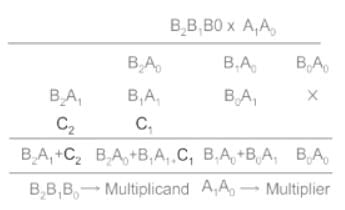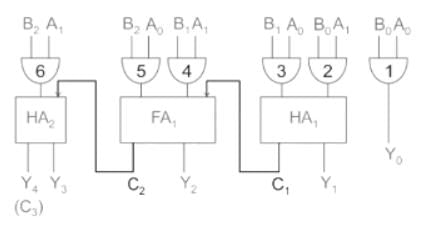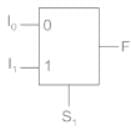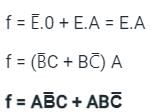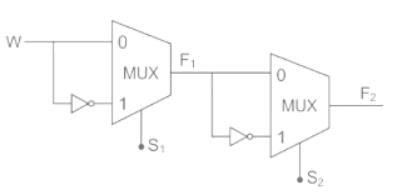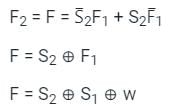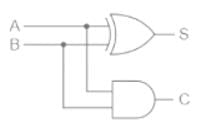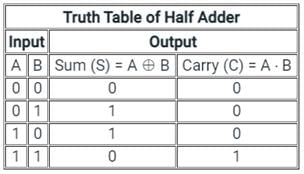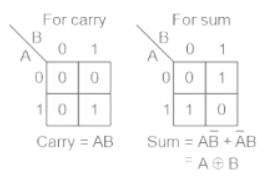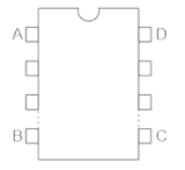Electrical Engineering (EE) Exam > Electrical Engineering (EE) Tests > Test: Combinational Circuits - Electrical Engineering (EE) MCQ
Test: Combinational Circuits - Electrical Engineering (EE) MCQ
Test Description
10 Questions MCQ Test - Test: Combinational Circuits
Test: Combinational Circuits for Electrical Engineering (EE) 2025 is part of Electrical Engineering (EE) preparation. The Test: Combinational Circuits questions and answers have been prepared
according to the Electrical Engineering (EE) exam syllabus.The Test: Combinational Circuits MCQs are made for Electrical Engineering (EE) 2025 Exam.
Find important definitions, questions, notes, meanings, examples, exercises, MCQs and online tests for Test: Combinational Circuits below.
Solutions of Test: Combinational Circuits questions in English are available as part of our course for Electrical Engineering (EE) & Test: Combinational Circuits solutions in
Hindi for Electrical Engineering (EE) course.
Download more important topics, notes, lectures and mock test series for Electrical Engineering (EE) Exam by signing up for free. Attempt Test: Combinational Circuits | 10 questions in 30 minutes | Mock test for Electrical Engineering (EE) preparation | Free important questions MCQ to study for Electrical Engineering (EE) Exam | Download free PDF with solutions
Test: Combinational Circuits - Question 1
The size of encoder required for 4 bit flash type ADC is:
Detailed Solution for Test: Combinational Circuits - Question 1
Test: Combinational Circuits - Question 2
The logic function implemented by the following 4: 1 MUX is:
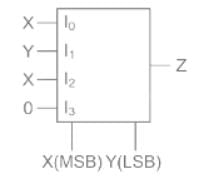

Detailed Solution for Test: Combinational Circuits - Question 2
Test: Combinational Circuits - Question 3
Minimum number of Half adders, Full adders, AND gates required to implement 2 × 3 multiplier is given as
Detailed Solution for Test: Combinational Circuits - Question 3
Test: Combinational Circuits - Question 4
The Boolean function ‘f’ implemented as shown in the figure using two input multiplexers is:

Detailed Solution for Test: Combinational Circuits - Question 4
Test: Combinational Circuits - Question 5
Construct a 16 × 1 multiplexer using 2 × 1 multiplexer. How many 2 × 1 multiplexer are required to construct?
Detailed Solution for Test: Combinational Circuits - Question 5
Test: Combinational Circuits - Question 6
Consider the multiplexer based logic circuit shown in the figure.

Which one of the following Boolean functions is realized by the circuit?
Detailed Solution for Test: Combinational Circuits - Question 6
Test: Combinational Circuits - Question 7
Which device converts, a decimal input number to binary
Detailed Solution for Test: Combinational Circuits - Question 7
Test: Combinational Circuits - Question 8
The output 'Y' of the combinational circuit shown below is
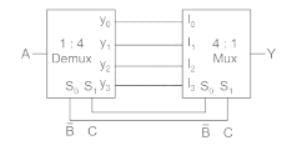
Detailed Solution for Test: Combinational Circuits - Question 9
Test: Combinational Circuits - Question 10

In the above image of IC (integrated chip) identify the pin number 1?
Detailed Solution for Test: Combinational Circuits - Question 10
Information about Test: Combinational Circuits Page
In this test you can find the Exam questions for Test: Combinational Circuits solved & explained in the simplest way possible.
Besides giving Questions and answers for Test: Combinational Circuits, EduRev gives you an ample number of Online tests for practice
Download as PDF






